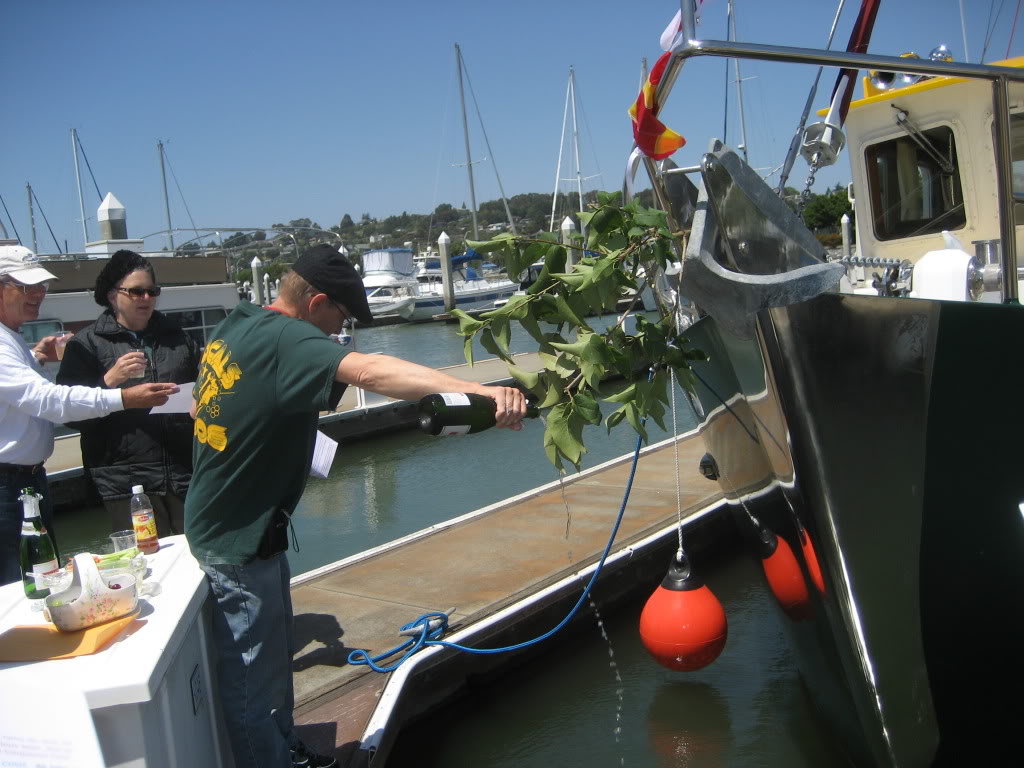Capn Chuck
Guru
- Joined
- Jan 20, 2009
- Messages
- 897
We have used C-Link chain connectors for decades and never had one fail, even in 12 hurricanes. As with all things anchoring, buy quality. Chuck
Hi Chuck, I too used one of the two piece connecting links to add more chain on a previous boat, but nowhere was I able to find a SWL rating for them, and I always worried that the link was the weakest part of the assembly. Once while working at a shipyard, I took a rigging class, and the instructor told us never to use any connecting devices (hooks, shackels, etc) that were not rated at least as strong as what they connected to. Then again finding the rating for the chain I currently have hasn't been easy either, so perhaps I should stop worrying and just add another 100 ft. That will open up a lot more options here in the land of deep water anchorages.Capn Chuck wrote:
We have used C-Link chain connectors for decades and never had one fail, even in 12 hurricanes. As with all things anchoring, buy quality. Chuck
"I've boated on a couple of occasions with friends who have combination rodes.* A couple are sailboaters, one is a powerboater.* And when the wind comes up some, their rode--- out at least to a 7 to 1 ratio--- is more or less straight out.* Which means it's starting to lift that few feet of chain attached to the anchor and raising the angle of pull.* At the same time in the same place in the same wind, our all-chain is angled slightly forward, with a 5 to 1 scope."
The angle of the anchor rode is meaningless , the angle of the anchor SHANK is half the key, the other half of the puzzle is SHOCK LOADING , not constant pull.
When it starts to blow there is ZERO stretch in chain , sure its not light to lift off the bottom , but it is metal that doesn't stretch much.
So the shock loading can get really high after the chain is bar tight.
Nylon has great shock absorbing ability , as long as it was selected properly.
Too thin and 100% if the stretch may be loaded , making it as poor as cable or chain..
Too thick and the loads will be too low to get the line to stretch 10%-15% that eases the loads when the gusts blow the bow sideways.
The "ideal" is 1/2 Chain 1/2 rope , but that usually requires far heavier chain than normally found in cruisers.
On our boat most folks would use 3/8 chain . which in most grades BBB? Hi Test ? is pretty weak.
WE* prefer 5 ft of 7/16* or 1/2 in Hi Test and all nylon, the heavier chain* better matches the strength of the 5/8 or 3/4 nylon , the choices.
5ft does lays on deck and works thru the chain stopper .
Our Hyd windlass will only accept wimpy 3/8 chain* which is used in the Bahamas , mostly protected anchorages
"Different ships , different long splices"
But we don't get out of bed in just a thunderstorm.
FF
We carry it in a mount on the swimstep and have it on a combination rode, also sized to be the main rode for the boat, consisting of 30 feet of chain and 200' (I think) of nylon. The rode is carried in a milk crate on the aft deck so we can carry it forward to deploy from the bow if need be.
I've got 5 anchors on board and a very small Danforth for checking the bottom type. I've got that many anchors because I'm an experimenter. Have a Claw, a Manson Supreme, two Danforth's and an early edition XYZ. Sure wish I had a washdown system.

Marin it looks like you've got maximum holding power right up at the top of your anchor requirements.
It is. I'm of the school that says if an anchor won't hold the boat it's not a whole lot of good to me. Of course it has to set in order to hold so that is almost as important to me as the holding part.
It's not rope on a boat......it's line.
